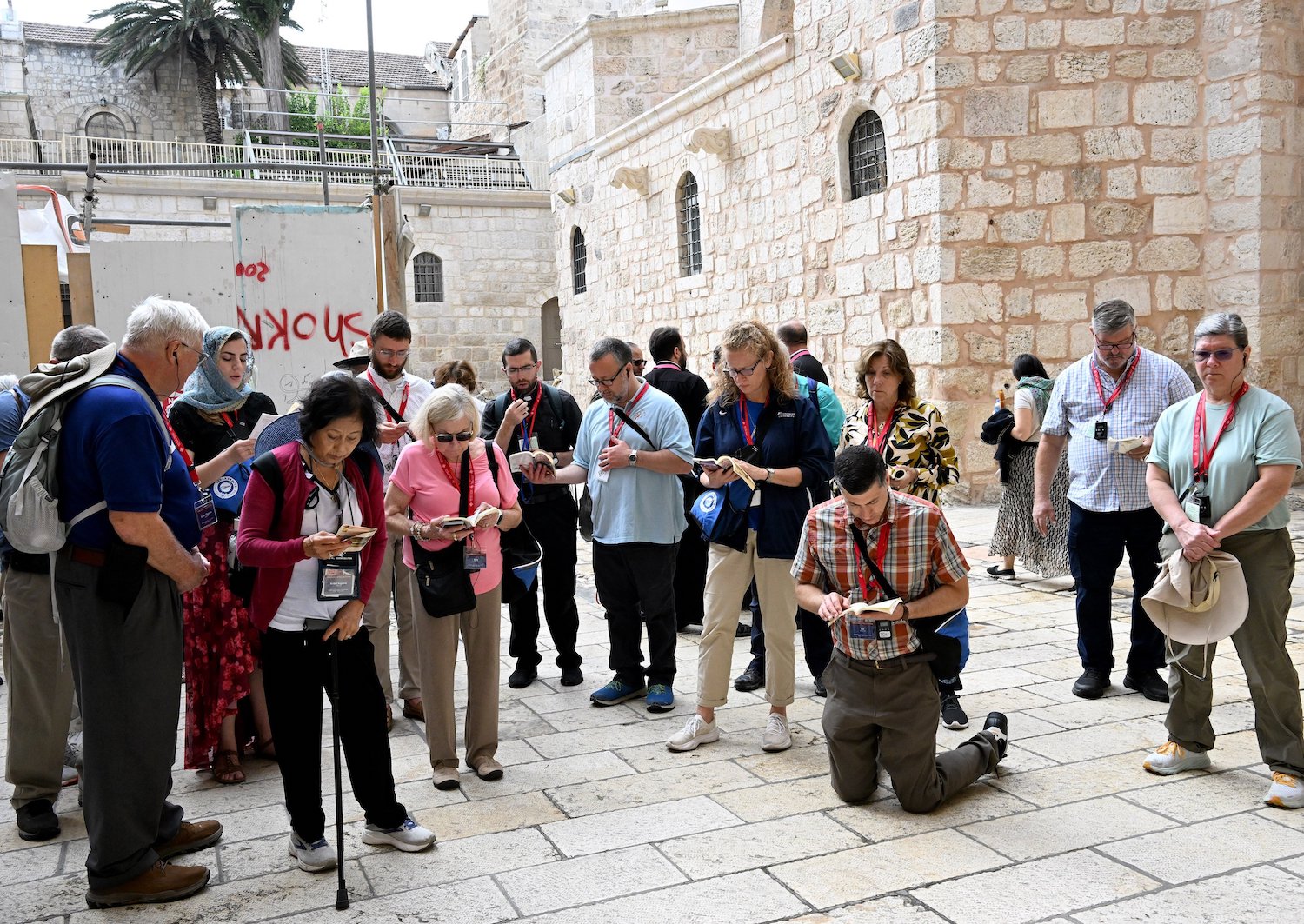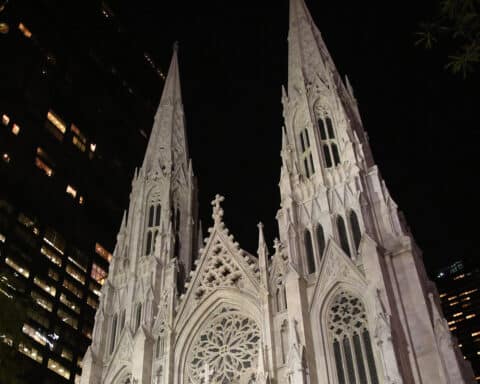Peace in the birthplace of Jesus. After millennia of fighting, is such a thing even achievable?
To this day, the Holy Land remains perhaps the most hotly contested piece of territory in the Middle East, if not the world. From its Mediterranean Sea coastline to the Jordan River, with a rocky landscape in between, home to the Dead Sea — the lowest elevation on the face of the earth — a history of conflict has garnered more headlines through the years than the fact that Israel and the West Bank are home to myriad sacred and historic sites significant to Jews, Christians and Muslims.
The current Israel-Hamas war puts that conflict into sharp relief.
It’s been almost five months since the Gaza Strip became a target of Israel’s air, sea and ground offensive launched in response to Hamas’ brutal Oct. 7 attack on Israel. The surprise attack by more than 1,300 Hamas terrorists left more than 1,200 Israelis and other nationals dead, and about 250 others, including more than 30 children, were taken hostage and brought back into Gaza. During a brief cease-fire in November, 105 hostages were released; in February two others were rescued. Hamas also holds the remains of about 30 hostages who were either killed on Oct. 7 or died in their captivity.
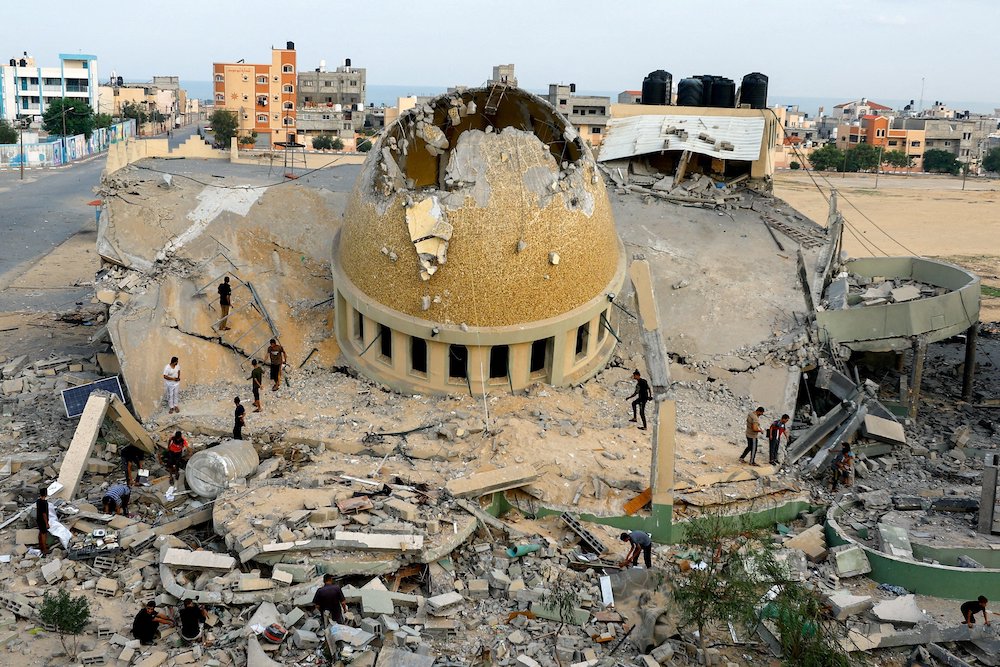
The Israeli offensive prompted Palestinians to flee Gaza City to the south, but the situation became beyond desperate anywhere across the Gaza Strip with the United Nations estimating that a quarter of Gaza’s 2.3 million Palestinians face starvation.
More than 30,000 Gaza Palestinians have been killed since the beginning of the war on Oct. 7, Gaza’s Health Ministry said.
In the endless cycle of violence in the Gaza Strip, at least 70 people were killed in a strike early morning Feb. 29 on a crowd of Palestinians waiting for humanitarian aid in Gaza City.
Why would thousands of people over centuries fight for the right to live in a country roughly the size of New Jersey?
Home of the Israelites
Israel has a long and complex history, tied to the Jewish people since biblical times, hence their claim to the land. But the Jewish people have not always occupied it. The Holy Land has changed hands many times over the centuries, spurring other peoples to claim the land as their own. The main question in the Israeli-Palestinian conflict remains: Who has the right to the land?
It is not an easy web to untangle. It’s a story of conquering and being conquered, settling and resettling.
According to biblical accounts, which the Jewish people point to in defense of their claim, even they were aliens in the land that became Judea. Though God promised a land “flowing with milk and honey” to Abraham and his descendants, it was mere generations before those descendants left that land for Egypt and better prospects for food amid famine.
After decades of slavery in that country, God chose Moses to lead the Jewish people back to the land he had promised them. At that point, the Canaanites — peoples of various Indigenous populations across the Levant — had settled there and the Israelites were expected to fight, and eradicate, most of these ancient peoples to reclaim their land.
Two Israelite kingdoms, Israel (in the north) and Judah (in the south), inhabited the land that first became known as Palestine in the 12th century B.C., with written records showing the term “Peleset” was used by the 20th Dynasty of Egypt to describe the neighboring land to their north.
Even after centuries of occupation, these two kingdoms were both conquered, one by the Assyrian Empire and the other by the Babylonians, respectively. The kingdom of Israel vanished from the earth; the Judean people were exiled to the far reaches of the Babylonian Empire, and the Temple of Solomon destroyed.
When the Persian Empire conquered the Babylonians, Cyrus the Great in 538 B.C. allowed the Jewish people to return to their homeland and build the Second Temple. Construction began 521 B.C. and was completed around 515 B.C.
Rise of Christianity and Islam
Following the death of Jesus Christ and the birth of Christianity, Judea, which had been a Roman ally since the second century B.C., was made a province of the Roman Empire in 6 A.D. However, in the year 70 A.D., in the course of the Jewish-Roman War, the Roman Empire besieged Jerusalem, destroyed the Temple and killed or enslaved most of the Jewish people living therein. Though many Jewish people remained in some areas of Palestine, the majority had been scattered across the Empire.
Over the centuries of Roman rule and the rise of Christianity, the Holy Land became less Jewish and more Christian. The remains of the Roman Empire had transferred to Constantinople by the time Rome fell to barbarian invasion and became known as the Byzantine Empire.
The rapid rise and spread of Islam in the seventh century led to the conquest of the Holy Land yet again. The Dome of the Rock was built upon the Temple Mount, the holiest site in Judaism, between 685-91 A.D., by the caliph ‘Abd al-Malik ibn Marwan as a mashhad, or shrine for pilgrims. Its golden dome above the Western Wall, which existed in the time of Jesus, forms an iconic image of Jerusalem known to many the world over.
Christians would reconquer and occupy the Levant for a short-lived period of the Middle Ages, establishing the Crusader States. With the fall of Acre — in coastal northern Israel today — in 1291 A.D., Muslim caliphates gained full control of the Holy Land for centuries, eventually being overtaken by the large and powerful Ottoman Empire until its collapse after World War I.
Modern centuries
Even while the Holy Land remained under Christian and Muslim control for centuries, Jewish people who remained there and throughout Europe faced varying levels of persecution and expulsion from places they had lived for decades. In the late 1800s, the Zionist movement — the desire of many Jews to return to “Zion” or the land of their ancestry — expanded in response to antisemitism in Europe. Jewish people began to move back to Palestine. As the Ottoman Empire had sided with the Central Powers in World War I, Allied forces conquered the Levant in the Middle Eastern theater of the war, and the Palestine area came under British control.
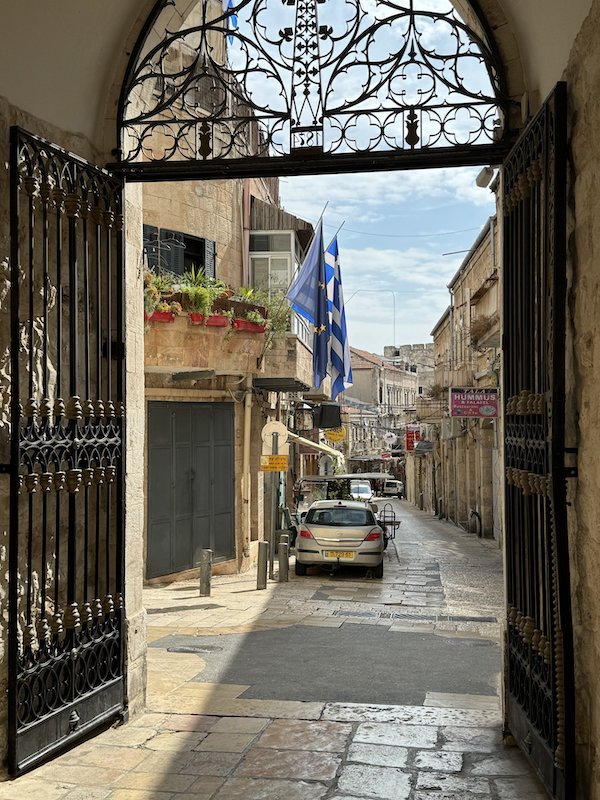
In the early 20th century, the League of Nations instituted the “mandate” system to administer non-self-governing territories. On July 24, 1922, the League entrusted Great Britain with the Mandate for Palestine, with the body recognizing “the historical connection of the Jewish people with Palestine.”
The Mandate for Palestine recognized the historic homeland of the Jewish people. With this official recognition and the growing Zionism movement, more Jewish people emigrated to the region, leading to hostilities between them and those already living there — particularly Arabs.
The end of World War II only exacerbated the situation, and the British chose to evacuate, ending the mandate on May 15, 1948. Israeli leaders, led by first Prime Minister David Ben-Gurion, declared the formation of their new state on May 14, 1948. Israel was admitted to the United Nations a year later.
The Arab-Israeli War of 1948 broke out when five Arab nations — Lebanon, Syria, Iraq and Egypt, with Saudi Arabia sending a formation that fought under the Egyptian command — invaded territory in the former Palestinian mandate.
The Israeli forces repelled the attacks and eventually gained the offensive. A year later, in July 1949, separate agreements were reached between Israel and the neighboring states of Egypt, Lebanon, Jordan (called Transjordan until 1949) and Syria, establishing formal armistice lines.
In the agreements, Israel added some territory formerly granted to Palestinian Arabs under the United Nations resolution in 1947, while Egypt retained control over the Gaza Strip and Jordan over the West Bank, respectively.
The Six-Day War, as it is known to Israelis, was waged from June 5-10, 1967, primarily against Egypt, Syria and Jordan. By the end, Israel defeated the three Arab armies and expanded its territory to four times its original size, capturing East Jerusalem, including the Old City, the West Bank, Gaza Strip, Sinai Peninsula and the Golan Heights. Israel’s gradual return of the Sinai Peninsula to Egypt was completed in 1982.
Bethlehem, the birthplace of Jesus, is in the West Bank, outside Jerusalem, where he was crucified and buried.
The present moment
In 1994, Palestinian self-government was implemented in the Gaza Strip and Jericho area of the West Bank. Also, that year, Israel and Jordan signed the Oslo Accords — for which Israeli Prime Minister Yitzhak Rabin, Israeli Foreign Minister Shimon Peres and Palestinian Liberation Organization Chairman Yasser Arafat were awarded the Nobel Peace Prize. Full diplomatic relations with the Holy See were also established in 1994.
In 1995, Palestinian self-government was broadened with its implementation in the West Bank and Gaza Strip.
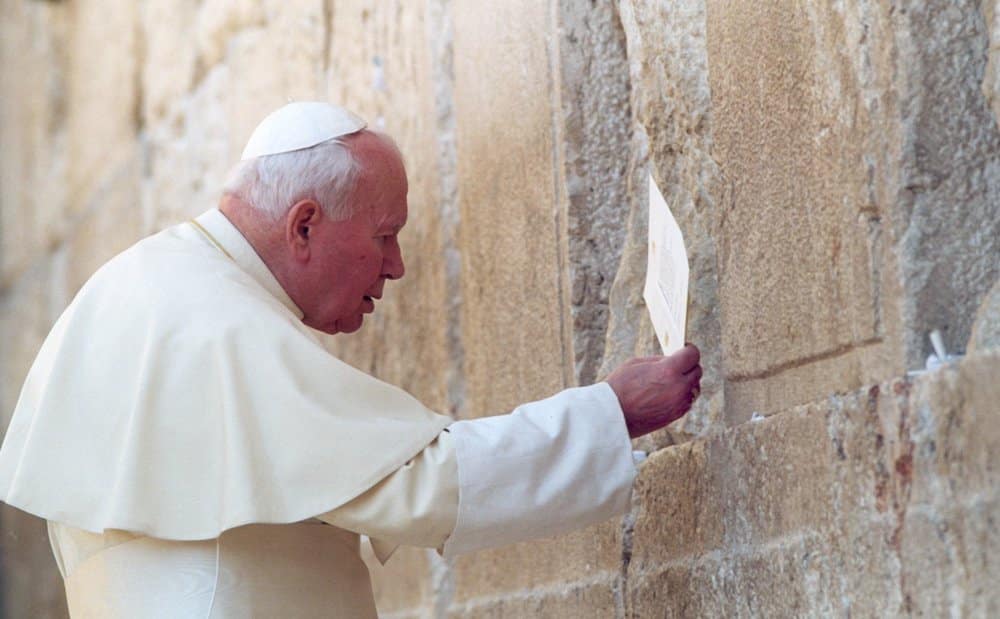
St. John Paul II visited the Holy Land in 2000.
In the ensuing years, a constant series of attacks by Hamas in Gaza led to Israel launching a series of airstrikes on Hamas targets in December 2008, with the war ending three weeks later with a unilateral Israeli ceasefire, although it would not be the end of conflict between Israel and Hamas.
On Dec. 6, 2017, the United States recognized Jerusalem as the capital of Israel.
For two weeks in May 2021, there was a major outbreak of violence in the Israeli-Palestinian conflict in Jerusalem, the West Bank, Golan Heights and along the Lebanon border. It began with the Jerusalem District Court’s eviction of six Palestinian families from the Sheikh Jarrah neighborhood of East Jerusalem.
The current Israel-Gaza War that began Oct. 7 has as its objective the freeing of the hostages still held by Hamas and ending of Hamas rule in the coastal enclave. On Feb. 26, U.S. officials signaled progress on negotiations on a cease-fire agreement between Israel and Hamas. However, Israeli Prime Minister Benjamin Netanyahu in an interview with “Face the Nation” on CBS the same day said it remained unclear if a deal can be reached with Hamas that would bring the release of Israeli hostages in exchange for Palestinians prisoners.
Jennifer Barton is a correspondent for Rhode Island Catholic, newspaper of the Diocese of Providence. Rick Snizek is the executive editor.

